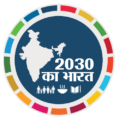In a world increasingly focused on sustainability and global development, the United Nations’ Sustainable Development Goals (SDGs) stand as a beacon of hope. These ambitious goals, often referred to as the SDG 2030 agenda, provide a roadmap for a better future, addressing a wide range of critical issues from poverty and inequality to environmental conservation and access to education. As part of our commitment to creating a more sustainable world, we present this comprehensive report on the progress of SDG goals in Madhya Pradesh, with a specific focus on SDG 2030, Agenda 2030, and 2030KaBharat.
Understanding the SDGs: A Global Commitment
The SDGs, adopted by all United Nations Member States in 2015, represent an unprecedented global commitment to creating a more equitable, just, and sustainable world by the year 2030. There are 17 individual goals, each with specific targets aimed at addressing some of humanity’s most pressing challenges.
SDG 2030 Madhya Pradesh: A State on the Rise
SDG Madhya Pradesh, often referred to as the “Heart of India,” is one of the largest and most diverse states in the country. It is home to a rich cultural heritage, stunning natural landscapes, and a rapidly growing economy. However, like many parts of India, Madhya Pradesh faces its share of socio-economic and environmental challenges.
Progress Towards SDG Goals in Madhya Pradesh
- No Poverty (SDG 1)
Madhya Pradesh has made significant strides in reducing poverty rates over the past decade. Government programs aimed at providing social safety nets and promoting entrepreneurship have contributed to this progress.
- Zero Hunger (SDG 2)
Efforts to improve food security and reduce hunger have been ongoing in the state. Initiatives to increase agricultural productivity and provide nutritional support to vulnerable populations have shown positive results.
- Good Health and Well-being (SDG 3)
Madhya Pradesh has been working to enhance healthcare infrastructure and expand access to quality healthcare services. This includes the establishment of new medical facilities and health insurance schemes.
- Quality Education (SDG 4)
The state has made substantial investments in education, focusing on improving school infrastructure, teacher training, and enrollment rates. However, challenges related to education quality and dropout rates persist.
- Gender Equality (SDG 5)
Gender equality remains a priority, with efforts to promote women’s empowerment, reduce gender-based violence, and increase women’s participation in the workforce.
- Clean Water and Sanitation (SDG 6)
Access to clean water and sanitation has improved in many parts of Madhya Pradesh, thanks to government initiatives and community-driven projects.
- Affordable and Clean Energy (SDG 7)
The state is exploring renewable energy sources and energy efficiency measures to ensure sustainable energy access for all.
- Decent Work and Economic Growth (SDG 8)
Economic growth and job creation are key objectives for Madhya Pradesh. The state has been promoting industries and entrepreneurship to achieve these goals.
- Industry, Innovation, and Infrastructure (SDG 9)
Investments in infrastructure development and innovation are crucial for the state’s economic growth and sustainability.
- Reduced Inequality (SDG 10)
Efforts to reduce inequality include targeted programs to uplift marginalized communities and provide them with equal opportunities.
- Sustainable Cities and Communities (SDG 11)
Urbanization is a growing trend in Madhya Pradesh. The state is working to build sustainable and resilient cities that can accommodate this shift.
- Responsible Consumption and Production (SDG 12)
Promoting sustainable consumption patterns and responsible production practices are essential for reducing environmental impact.
- Climate Action (SDG 13)
Given the importance of climate action, Madhya Pradesh is actively involved in initiatives to combat climate change and promote environmental conservation.
- Life Below Water (SDG 14)
Conservation efforts focus on preserving aquatic ecosystems and biodiversity in the state’s rivers and lakes.
- Life on Land (SDG 15)
Protecting and restoring terrestrial ecosystems is a priority, with a focus on biodiversity conservation and sustainable land management.
- Peace, Justice, and Strong Institutions (SDG 16)
Building a just and peaceful society involves strengthening institutions, promoting the rule of law, and ensuring access to justice for all.
- Partnerships for the Goals (SDG 17)
Collaboration and partnerships are essential for achieving the SDGs. Madhya Pradesh actively engages with various stakeholders, including government agencies, NGOs, and international organizations.
Challenges and Roadblocks of SDG in M.P
While there has been notable progress in various SDG areas in Madhya Pradesh, several challenges remain. These include:
- Environmental Concerns: The state faces environmental challenges such as deforestation, air pollution, and water pollution, which require urgent attention.
- Education Quality: Although strides have been made in increasing enrollment rates, the quality of education and high dropout rates need addressing.
- Inequality: Reducing inequality remains a complex task, as disparities persist across different regions and communities.
- Climate Resilience: SDG Madhya Pradesh needs to bolster its climate resilience strategies to mitigate the impact of climate change effectively.
2030KaBharat: The Vision Ahead
2030KaBharat, which translates to “India of 2030,” encapsulates the vision of a prosperous, sustainable, and inclusive India. It aligns perfectly with the SDG 2030 agenda, emphasizing the need for comprehensive development.
Conclusion
In conclusion, SDG in Madhya Pradesh has shown commendable progress in working towards the SDG goals outlined in the Agenda 2030, contributing to the larger vision of 2030KaBharat. While challenges persist, the state’s commitment to sustainable development is evident. With continued dedication and collaboration, Madhya Pradesh can play a pivotal role in achieving the SDG 2030 agenda and shaping a better future for its citizens.

